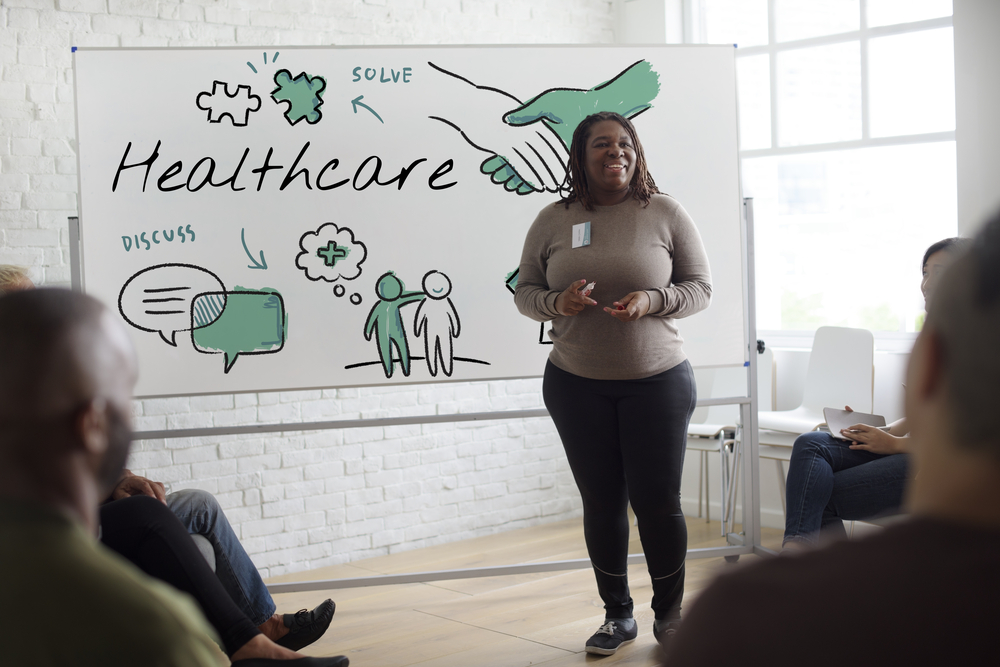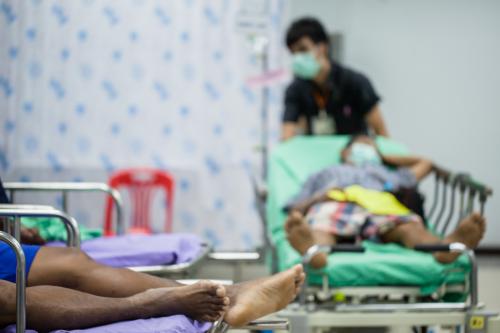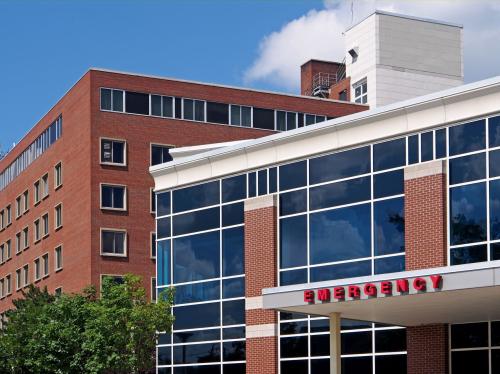In the United States, we know that long-standing systemic health and social inequities increase the likelihood of poor outcomes or death for members of racial and ethnic minority groups. For example, Black babies are more likely to die before their first birthday, and Black women are more likely to die from childbirth-related causes than their white counterparts. The COVID-19 pandemic has also underscored the fact that economic and social circumstances, social determinants of health (SDOH), and maldistribution of resources contribute significantly to health inequity.
Many of the more tangible and measurable factors driving inequity could be addressed through a heightened national political commitment to achieving a better balance in health-related budgetary and organizational reforms. But some of the factors are less easy to see and measure – yet are perhaps just as challenging. Distrust and poor communication related to racial and cultural differences pervade the health system and frustrate many efforts to reach the goal of good and equitable care for all in America. All too often, Black patients and other minorities are spoken to rather than talked with; the result is less-effective interactions, less empathy and acknowledgment of concerns, and ultimately, worse outcomes.
Poor communication is a failing of the health system, not of patients. A good health system engages fairly and respectfully with everyone who seeks care, and it recognizes that its patients and plan enrollees come with a range of previous experiences with the health care system, as well as different literacy levels, language fluency, and cultural norms. It is the responsibility of system managers, and front-line providers, to ensure that everything from examination room interactions to provider training is guided by good communication techniques. But while health managers will usually say they recognize the importance of good communication, there remain profound barriers to introducing and implementing the techniques needed to achieve better outcomes and equity.
These barriers have deep roots.
Distrust of the medical system
The medical system has lost the trust of communities of color – and suspicion of this system is widespread in minority communities. A Kaiser Family Foundation survey conducted in the Fall of 2020, for instance, found that far fewer Black adults trust doctors and hospitals to do the right thing most of the time than is the case for white people.
There are grim historical reasons for this distrust, emanating from such episodes as the 1932-1972 Tuskegee Syphilis Study and the forcible sterilization of Native American women throughout the 1970s. Cases like these are widely known throughout and across communities of color and diminish their confidence in the health system.
This history contributes in many communities to a lack of trust in the recommendations and actions of health care providers they view as holding racial and cultural biases. It is reinforced by perceptions by some groups that they are routinely treated unfairly when they interact with the health system, with a much higher proportion of Blacks than whites, for instance, expressing the feeling that it is hard to find a doctor who treats them with dignity and respect. This combination of history and ongoing disrespect leads to many population groups being less likely to follow physician instructions, less likely to access available medical care, and less inclined to heed public health recommendations. In September 2020, a study on race and health conducted by the Kaiser Family Foundation, for instance, found that half of the surveyed Black adults were not planning to take a coronavirus vaccine, even if it is free and deemed safe by scientists.
Poor communication
Even when there is trust, simple difficulties in communication can pose a significant barrier to good outcomes, disproportionately affecting some population groups. Defining and measuring “good communication” is not easy. The success or value of the same pattern of interaction between a provider and patient can be perceived quite differently by different pairs of individuals. Nevertheless, in medicine, there are several common reasons for poor communications that can affect health outcomes.
Using a professional interpreter, for instance, can still lead to subtle but important information being lost during interactions between immigrant patients and health providers, and can also make it more difficult to establish the close relationship and empathy that aids good treatment and outcomes.
But good communication goes beyond just language. Being sensitive to cultural differences is important even in interactions with a common language – from understanding conventions regarding eye contact to physicians appreciating ways in which lifestyle and culture can influence the relative effectiveness of alternative treatment plans. For success, some experts argue the approach of health providers should be that of cultural “humility” rather than cultural “competence.” However it is viewed, the degree of cultural connection can have profound implications in health care.
For example, a recent study in Oakland, California, found that when Black men were randomly assigned to either Black or white physicians for a checkup, Black physicians were more than 50 percent more effective than non-Black physicians in encouraging Black men to agree to preventative tests and vaccinations. Although they did not offer policy or practice recommendations, the authors concluded that generally achieving that level of “increased screening could lead to a 19% reduction in the Black-white male cardiovascular mortality gap and an 8% decline in the Black-white male life expectancy gap.”
Perhaps not surprisingly, a 2017 review of multiple studies found that “Black patients consistently experienced poorer communication quality, information-giving, patient participation, and participatory decision-making than white patients.”
Medical training
Medical schools and hospitals have been criticized for not focusing enough on communications training, thereby contributing to distrust and poor communication being a common characteristic of medical services. In addition, medical schools have been faulted for doing too little to debunk health stereotypes about different races and cultures, such as pain tolerance and race-related risk measurements in assessing patient conditions – even perpetuating them. One study of medical students found on average that these students endorsed over ten percent of a series of false differences between Black and white patients regarding pain, including differences in skin thickness and sensitivity to pain. Added to this are widespread unconscious racial biases among both providers and patients.
Medical schools and nursing programs have also generally done an inadequate job in training future medical personnel to appreciate and inquire about non-clinical factors in health, such as housing conditions, stress, nutrition, and other SDOH. The health of all patients is affected to some degree by social determinants, but they are disproportionately important for some patients and in some under-resourced communities. While medical students generally learn about social determinants as content areas, too little weight is given to how they should be understood and factored into strategies to assess and address a patient’s needs. For example, among chronically homeless patients, just finding a safe place for the patient to stay is often crucial to both improving health and decreasing costly hospital admissions. Yet there is rarely training offered to physicians on how they can help facilitate steps to address such issues.
In practice, most SDOH education is acquired on the job through informal experiential learning in hospitals and clinics. Medical personnel rarely learn effective non-clinical procedures for dealing with social factors affecting the health of their patients.
Addressing Communication and Cultural Competency in Healthcare
If we are to achieve a more equitable and efficient healthcare system, it will be important to address these communication barriers that impact the operation of this health system. Fortunately, there are strategies available and some progress being made in utilizing them.
1. Enhance medical training
Better training of medical personnel is essential for improving communication between providers and patients. Medical schools have been taking some important steps. One is to amend course material that may inaccurately suggest racial differences in data related to diagnoses and patient reactions to treatment and procedures. At the University of Washington, for instance, medical students successfully questioned race as a coefficient in measuring kidney function. Some schools, such as the University of California San Francisco, are introducing courses for clinicians on how to avoid unconscious racial stereotyping and provides cautions for researchers on how to avoid unintentional bias. In 2016, a University of Minnesota team undertook a lengthy and detailed set of conversations with a diverse group of community members to help reshape medical training to reflect racial factors.
Medical schools have also sought to increase diversity in medical school admissions so that minority patients can more easily find physicians that may connect better with their background and life experience. Diversity requirements were put into place in 2009 by the Liaison Commission on Medical Education and the results indicate some modest improvement. Between 2002 and 2017, for instance, the percentage of Black enrolled students rose from 6.8 percent to 7.3 percent; the proportion of Hispanic students rose from 5.4 percent to 8.9 percent. Much more still needs to be done. But some institutions show what is possible. For instance, 73 percent of the University of Houston College of Medicine inaugural class come from underrepresented minorities in medicine.
Another important step is to educate medical students more extensively on ways in which social factors can influence health conditions. In one example of trying to address this educational need, a group of clinicians and health educators at the University of Pittsburgh developed an SDOH “Fast Facts” teaching tool: brief, evidence-based summaries of key SDOH topics commonly encountered by clinicians. Combining medical training with a Master’s in Public Health (MPH) that covers social determinants is another way of equipping physicians with valuable skills to address social health factors, but that does require a longer period in training.
Hospitals and health systems also play an important role in the later stages of physician training and continuing medical education. Indeed, given the classroom focus of medical schools, there is generally more opportunity for gaining experience and training in communication during residency. Fortunately, the Accreditation Council for Graduate Medical Education now requires residency programs to address factors that lead to health disparities. Johns Hopkins responded in 2011 with a program that, among other things, requires every resident to develop partnerships with neighborhood religious and community groups.
2. Reach out to people and local institutions
Well-trained medical interpreters are important in overcoming the most obvious communications obstacles when medical providers are working with limited-English patients, but that is only one step for some patients and there are several reasons why interpreters are often underutilized or not used effectively. Health systems that are looking seriously at communications barriers also know they must go much further, combining better and culturally sensitive translation services with improved ways to connect more broadly with patients. The nation’s experience with combatting HIV in marginalized communities underscored the importance of working closely with respected local institutions to build trust and a network of support. Learning from such efforts and recognizing its troubled history with the non-white community in Baltimore, Johns Hopkins hospital has organized teams to go into communities and build trust with residents and their leaders, working with senior centers, churches, mosques, and other neighborhood settings. Since 2013 the Mayo Clinic has developed a similar partnership with Black churches in Minnesota, focused on cardiovascular disease and other chronic conditions. North Carolina and the Washington, D.C. area are among the places where community clinics are working closely with Black churches to build greater acceptance of COVID-19 vaccination. Trust-building approaches like these are urgently needed to increase the vaccination rate in non-white communities.
Community clinics have advantages over large hospital systems in tackling communications and trust issues because as primary health centers and neighborhood institutions, they are a more integral part of the neighborhood culture and community. Siloam Health in Nashville, Tennessee, has built on this inherent strength by training teams of community health workers to work closely with dozens of immigrant communities, enabling providers to work with patients in culturally sensitive ways. Meanwhile, Mary’s Center, a clinic system in the Washington, D.C. area, has formed over one hundred partnerships with service and cultural organizations to help address social determinants as well as language and cultural barriers faced by its mainly immigrant patients. A critical component of Mary’s Center’s service delivery model is building strong relationships with patients and key community stakeholders.1
Such efforts to communicate directly to communities and individuals who may be distrustful or skeptical appears to be paying off in areas like COVID-19 vaccination. Thus, while the September Kaiser Family Foundation poll on race and health found that half of the surveyed Black adults were not planning to take a coronavirus vaccine. After concerted efforts using trusted spokespersons and Black medical personnel 62 percent of Black Americans said that will likely get vaccinated by December of 2020 (though still below the white percentage).
3. Use intermediaries
Respected and trained intermediaries can be crucial to building the relationships needed to assure trust, good communication, and often the connections to other social service needs. The frontline community health workers used by clinics and other parts of the health system are critical to this task. As an example, in Spanish-speaking communities, the promotores de salud model creates a link between members of the community and health care resources. While their primary role is linking vulnerable populations to the health care system, they also handle some aspects of case management, as well as language assistance and cultural competence support, advocacy, informal counseling, and building community capacity. The community health worker needs to operate as a member of the whole health team, with all team members sharing their insights and skills. But the cultural knowledge and shared experiences of these intermediaries allow them to deliver messages about available services in a way that community members can understand and trust and are more likely to follow.
Key establishments within communities, such as religious institutions, grocery stores, and even barbershops are effective ways to create trust and relationships to improve health and convey key public health messages. For instance, Health Advocates In-reach and Research (HAIR) partners with Black barbershops and beauty salons in Prince George’s County, Maryland. The shops and salons in effect credential health professionals with their clientele so that providers’ advice is more likely to be followed. Meanwhile, HAIR also trains barbers and stylists to be “Lay Health Advocates” to promote screening and help deliver public health and medical services to the Black community. Similarly, St. Louis University has for many years undertaken a “Barbershop Tour” program, in conjunction with the local chapter of 100 Black Men of America, a civic organization and service club, in which nursing and public health students screen barbershop patrons for blood pressure, smoking, nutrition, stress and other factors related to hypertension, and provide guidance on how to reduce health risks. Again, the role of the trusted, credentialing intermediary is critical to the program’s effectiveness.
Lay workers are critical intermediaries that improve communication between patients and the health system, which helps reduce the challenges and frustrations for both patient and provider. Harlem-based City Health Works, for example, imported a model from Africa and India to create a team of lay workers, known as “health coaches,” who go into the homes of patients. They help patients manage chronic conditions, such as diabetes, address social determinants (from housing problems to nutrition and transportation), and act as the patient’s agent with health providers. “They come from the community, with a different perspective,” says a senior local hospital official. “They speak the language. And they can look in the refrigerator.”
Hospitals, physicians’ offices, and health plans should make greater use of such intermediaries. While an individual physician or hospital may lack the skills and resources to address issues that require trusted relationships, they can partner with organizations that do. Health Leads is a pathbreaking example of such a linking organization. For instance, a discharging hospital physician can write “prescriptions” for a patient’s social service as well as medical follow-up needs, and Health Leads can connect the patient with service programs and mobilize its networks of community-based organizations. Health plans and hospitals are also making more use of partnerships with trusted local community clinics. And COVID-19 vaccination efforts are also turning more to community clinics to address income and racial differences in take-up rates, thanks to their authoritative reputation close relationships with minority communities. Indeed, if we are to achieve an equitable health system, there will need to be strategic federal investments in community clinics and other community-based health services.
___________________
Achieving an equitable health care system requires action on several fronts. Much of the systemic inequity we see in the U.S. healthcare system today is the result of conscious decisions on the allocation of health resources. Those decisions need to be reassessed. In recent years we have become more conscious of “upstream” factors in health, such as housing, education, and other social determinants of health – and we have begun to consider steps to address these factors. It is important to recognize that person-to-person communication is also a critical component of equitable health; it is time for us to address that, too.
-
Footnotes
- Stuart Butler is an unpaid board member of Mary’s Center.







